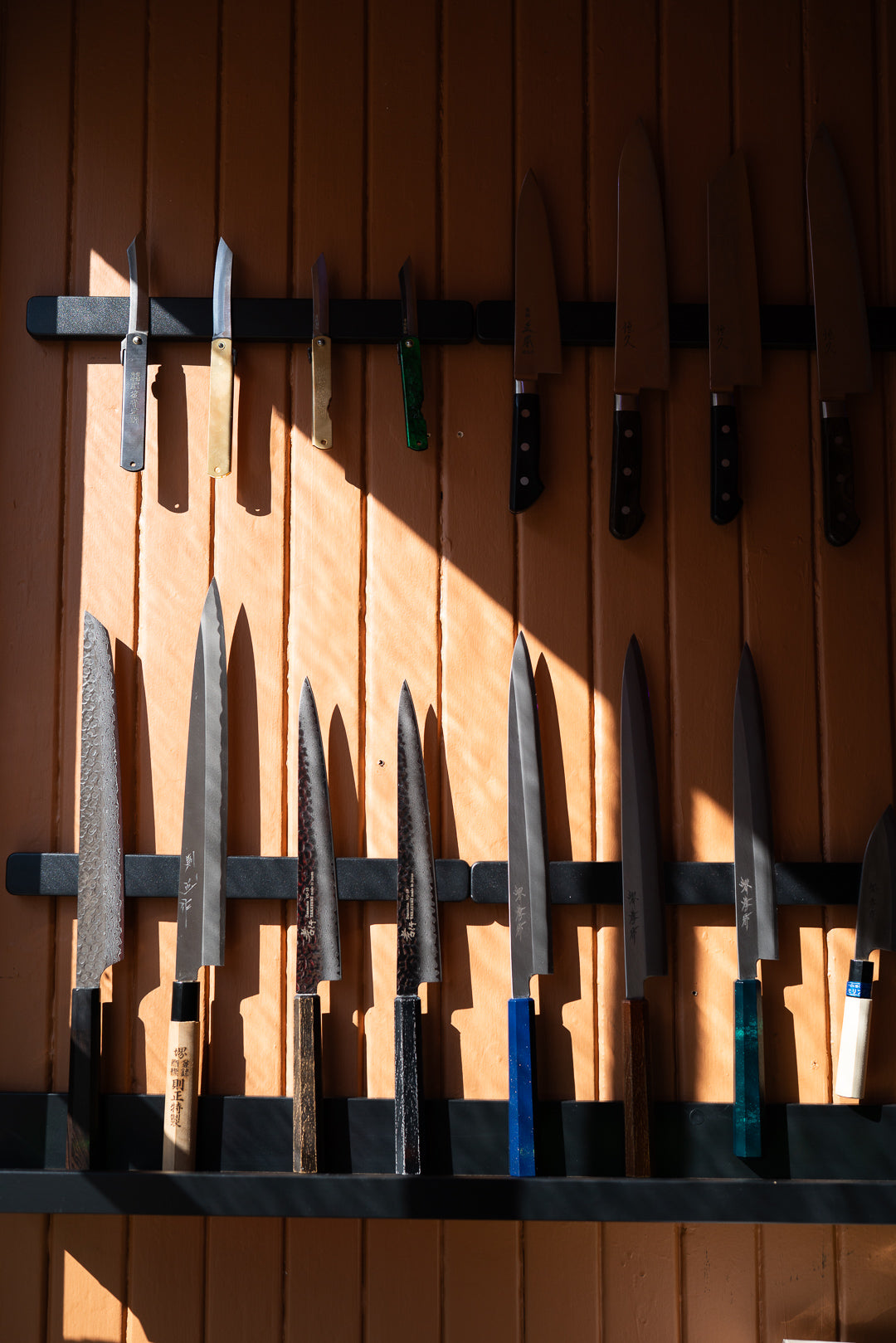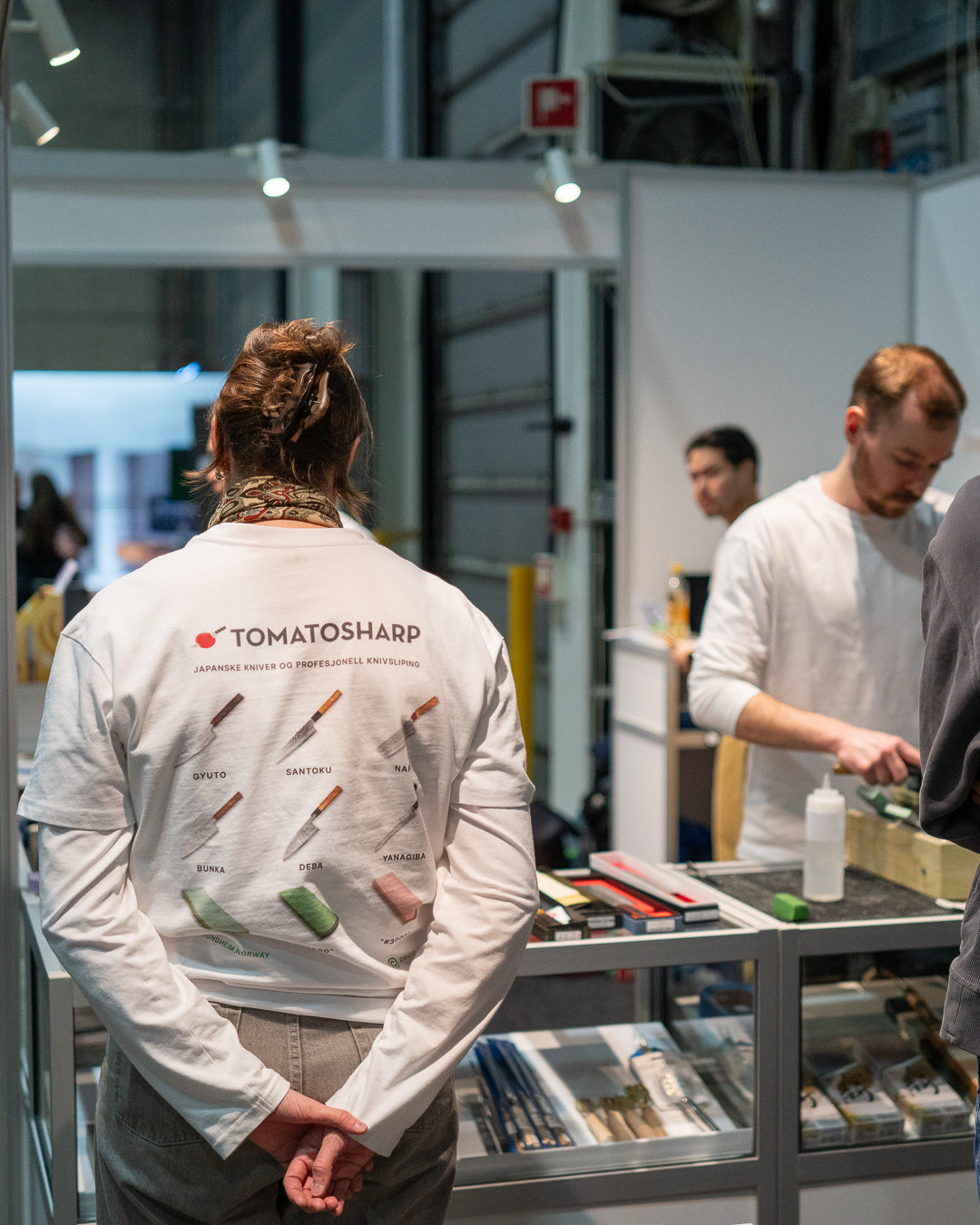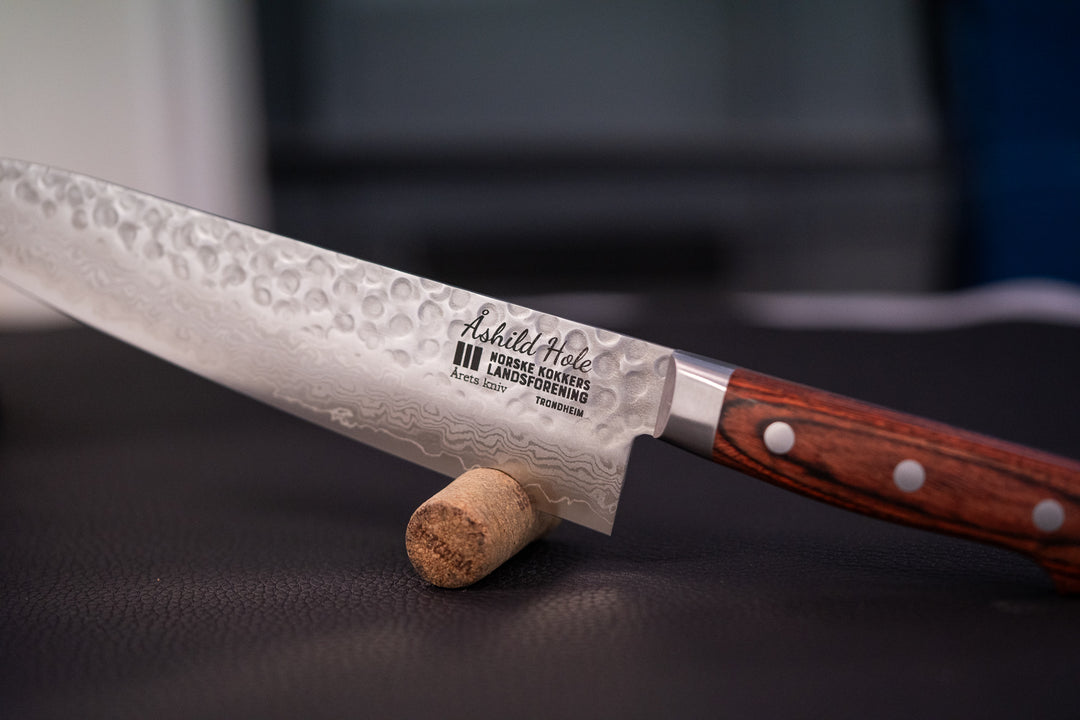Knife sharpening - a sustainable practice

Circular economy

The circular economy is about minimizing waste and using resources in a more efficient way, versus the linear model where you produce, use and then throw away. Circular economy is a system where resources are kept in a cycle where they can be reused. This includes recycling, reusing and repairing products. In our industry, sharpening and repairing dull or old knives is an excellent example of this principle.
Use-and-throw society

In short, the linear model is the opposite of the circular economy. The life cycle of a product that follows the linear model follows a straight line where it is produced - used - and discarded.
Take knives as an example: it is not unusual that when a knife becomes dull and useless, you think that the knife has reached "its potential", so you throw it away and buy a new knife to replace the old one.
The problem is also exacerbated by the fact that you can buy mass-produced knives for very cheap - sometimes even cheaper than what it costs to have the knife sharpened professionally. These knives can often cost as little as a couple of hundred kroner and are made with cheaper materials of lower quality, which in turn shortens the life of the knife. The cost of repairing and sharpening the knife becomes relatively high compared to the price of a new product, something we also see in other industries - e.g. the clothing industry.
All in all, this leads to unnecessary waste and the use of valuable resources in the production of new knives.
How is Tomatosharp sustainable?
Reduced CO2 emissions during new production of knives
Did you know that the production of just one knife results in an emission of between 1-3 kg of CO2?
This includes all energy included in the production of raw materials, shipping, processing into products and finally shipping and sales.
Tomatosharp's biggest measure to reduce greenhouse gas emissions is the knife sharpening itself, which is also our specialization in the industry. When you sharpen a knife, you remove very small amounts of worn metal along the edge to establish a new, sharp edge.
We sharpen approximately 200 knives weekly, and in certain seasons we are well above average. But when you do the calculation on the average (200 knives/week), we reduce between 200 and 600 kg of CO2 per week. Roughly speaking, it is estimated that we reduce a full 20 tonnes of CO2 emissions annually with just knife sharpening.

Internal company climate measures
Our company takes climate seriously and carries out climate measures where possible. We are concerned with recycling and sorting waste at source, and the packages we send in the post are reused so that we get the least possible amount of waste per customer. We are also a certified beacon as a Cycle-friendly workplace, awarded by the Environment Package on the basis that we cycle to, from and to work, with collection and delivery of knives to local restaurants, canteens and other customers in Trondheim.
Reduced food waste
A lot of food waste is caused by food not looking appetizing and having to be thrown away. By using sharp knives, you get cleaner cuts and preserve more of the nutrients in the food, which means that the food lasts longer before it goes bad. Other reasons for food waste are, for example, in production kitchens, where cutting blades are not sharp enough to preserve the fibers in the food being processed. This can lead to the food being mashed and having to be thrown away. By maintaining and sharpening knives, we minimize food waste as a result of dull knives in this part of the value chain.
Quality over quantity
Tomatosharp focuses on offering high-quality knives that can be maintained and create a long-lasting relationship with the kitchen knife. Through many years of experience, we have seen which materials can be maintained and make it possible to have one favorite knife that can replace several usable knives. We believe that when you invest in a good knife, you will be more concerned about taking care of it by sharpening it, which in turn promotes the principles of the circular economy.
Training and skills development
We at Tomatosharp are keen to contribute to increasing competence when it comes to sharpening and maintaining knives. In a short time, we have established ourselves as a knowledge base by training chefs in the hospitality industry (hotel, restaurant and catering), educational institutions and food enthusiasts.
By imparting knowledge about sharpening, maintenance and the correct use of knives, we provide the tools needed to look after the knives in a sustainable way. This means that the lifespan of the knives is extended and the need to buy new knives is reduced, which will have a positive impact on the climate footprint.

How does Tomatosharp sharpen knives?
Knife sharpening is a process where a dull knife is made sharper by removing small amounts of material from the edge of the knife. The best way to do this is by hand on grindstones.
At Tomatosharp, we have developed our own sharpening methods that give a long-lasting and sharp result without removing unnecessary material from the knife. This means that you can enjoy your knives for several years, without having to sharpen them so often.
The amount of steel that we remove can be as little as half a millimeter, depending on how dull the knife is. An ordinary chef's knife can therefore, in theory, be sharpened over 100 times before it is considered out of date. That makes quite a lot of knives!
Sharp knives for a greener world
Knife sharpening is not just a way to maintain the sharpness and functionality of our knives. It is also a sustainable practice that contributes to the circular economy and reduces the climate emissions associated with the production of new knives.
By choosing knife sharpening and quality knives, we can reduce waste and use resources more efficiently. Tomatosharp is dedicated to providing sharpening and quality knives that contribute to a more sustainable future.

Estimate of CO2 emissions during the production of a kitchen knife:
Primary production of 1 tonne of steel results in an emission of 1.91 tonnes of CO2 (1)
An average kitchen knife weighs from 300-600g.
Production of steel: 570-1140g CO2
Transport: Between 100-300g CO2 per km
Heat treatment (hardening) and grinding: Can be compared with the production of steel (570-1140g CO2)
Overall from 1-3 kg per knife.
This is only an estimate and varies depending on the production process, type of steel produced, size of the knife and transport of raw material and product.
References:
- World Steel Association. "Sustainable indicators" World Steel Association (2021). https://worldsteel.org/steel-topics/sustainability/sustainability-indicators/












Leave a comment